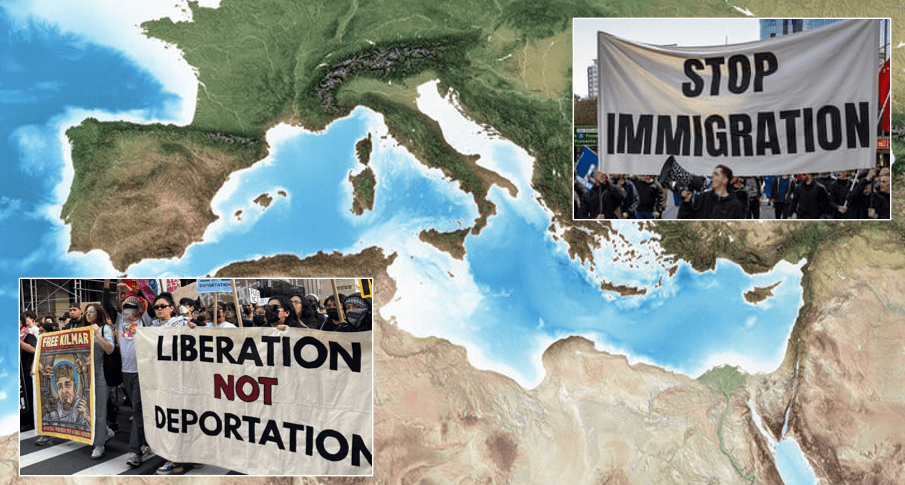How Europe could deal with the migrant crisis coming from Libya

Libya shares its northern border with the Mediterranean sea, on the other side of which lies Malta, Italy and Greece, making Libya an extremely popular place for migrants who are hoping to reach Europe. The Mediterranean crossing is as dangerous as it is popular- boats frequently capsize or sink, with many being rescued but many also being killed or made missing persons.
Some boats are intercepted and their passengers sent back to Libya, and those who do make it across are not welcomed with open arms. The dangers in the crossing makes other Mediterranean countries keen to discourage people from attempting it, and the high numbers of those arriving in Italy and Greece are difficult for the governments to manage.
The politics around Libya’s migration crisis is increasingly complicated. The nation is increasingly strained by high rates of refugees from the neighbouring country Sudan, which is in the height of a violent civil war, on top of those seeking passage across the Mediterranean to Europe.

A similar problem to the one Mediterranean countries including Greece and Italy face is also faced by the UK. Since the current government came into power in July 2024, over 50,000 have crossed the English Channel from France, around 28,000 of those being in 2025 according to the BBC. The International Organization for Migration estimates that over 2024 at least 82 migrants died crossing the Channel, and as of August 11th at least 20 have died so far in 2025. These figures are far lower than the fatality figures of the Mediterranean crossing, but it is enough for the UK government to be equally keen to discourage people from attempting the crossing.
The latest effort has been a deal with France dubbed the “one in, one out” deal, meaning that for each migrant the UK sends back to France, they commit to being sent someone with a strong case for asylum. This new policy has faced criticisms, but ultimately the goal is to provide a controlled legal route for migrants and discourage irregular and illegal crossings.
The threat of being sent back from Italy or Greece would certainly discourage those hoping to cross the Mediterranean from Libya, but for a policy like this to work Libya would first have to address the serious human rights violations seen across the nation.
For the UK there is a solid legal principle to send migrants back to France: it is considered a safe country. However the EU and member states have been criticised for cooperating with Libyan authorities to curb migration out of Libya due to the human rights abuses faced by many residing in the nation. Amnesty International has drawn attention to the “hellish condition faced by migrants and refugees in Libya.” The groups has documented crimes against refugees and migrants in Libya including prolonged arbitrary detention, enforced disappearances, torture, rape, unlawful killings, extortion, and forced labour. Making Libya a safe place for migrants will require years of political progress, and sending migrants back there is not yet a viable option.
Another migration model the EU could take inspiration from is the system used in Denmark. Although a member of the EU, Denmark deviates from the common EU rules on asylum, and is known for its very restrictive migration policy, brought in by centre left politicians according to the BBC. Denmark focuses on reducing the incentives for migrants and asylum seekers to enter the country, and increasing incentives for those who enter the country to work. Their radical policies are justified by politicians arguing that migration is a strain on social cohesion and social welfare. These methods have resulted in very high employment rates amongst migrants in Denmark, but at the cost of harmful anti-immigration rhetoric and attitudes.
The criticism of Denmark’s migration model should not be understated. The country’s policies have been widely labeled as inhumane, but the theory behind them could certainly be applied to migration from Libya. According to Trading Economics, Greece’s unemployment rate is around 8%, and Italy’s 6%, whilst Denmark has one of the lowest in Europe at 2.6%.
However, anti-immigration attitudes are also common in countries with high levels of immigration. An equally radical migration model can be found in Spain, a nation which has decided to open itself to high levels of migration. With hundreds of thousands of jobs being filled by migrants, their approach has had a positive impact on their economy, which grew by 3.2% over 2024 whilst Italy’s grew only 0.5%. There are countless factors that feed into economic growth, but it’s clear that high levels of tourism and immigration are boosting Spain. But in July of 2025 there was serious anti-migrant unrest and protest in Spain, and the nation has one of the highest overall unemployment rates in Europe.
There will be a sweet spot between Denmark and Spain’s policies that can be applied in the Mediterranean. The anti-immigration attitudes already growing in Italy and Greece will make the idea of opening up more to migrants and asylum seekers from Libya an unappealing idea, but if those migrants are given more incentives to work then the positive impact on employment rates could be a good enough return. In the UK, asylum seekers are not allowed to work, which perpetuates the harmful rhetoric spread by certain groups that migrants are lazy and/or do not contribute to society. Therefore, not just allowing them to work, as they are in Italy and Greece, but also incentivising it in a similar way to Denmark could be an effective policy.
Maghrebi/BBC/Amnesty International/The Guardian/Trading Economics
Want to chase the pulse of North Africa?
Subscribe to receive our FREE weekly PDF magazine













